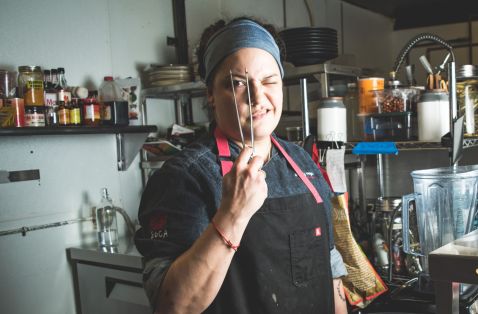New Orleans has beignets. New England has lobster. Philadelphia has cheesesteaks. Florida has key-lime pie. Just as these places boast local heritage foods, so too does Arizona.
Arizona is home to some of the oldest documented food traditions in North America.
The "three sisters" of corn, beans and squash cultivation can be traced back 4,100 years, and local farmers still grow more than 160 of the same heirloom varieties of fruits, grains and vegetables produced here in 1912, when Arizona became a state. Arizona also boasts heirloom livestock breeds found in few other places.
Not only does Arizona have a greater diversity of wild and farm-raised heritage foods than most other states, but it also has some of the most dramatic extremes in food-producing landscapes. The date groves and lettuce fields around Yuma are barely above sea level, while the more than 10,000-feet-high San Francisco Peaks provide perfect growing conditions for a variety of wild mushrooms.
Below are just a few of Arizona's heritage foods, as well as where to find them.
Saguaro and prickly pear cactus
Cacti might not look like good eating, but desert peoples have long prized certain species for the way they taste. The Tohono O'odham historically traveled north following the ripening of saguaro cactus fruit. Not only would they use the fruit in their rainmaking ceremony, but they would also boil down the fruit juice to make syrup. The fruit can also be dried into sweet, crunchy candy.
More recently, chefs have been inspired to work it into barbecue sauce. You can find saguaro cactus syrup and barbecue sauce in gourmet food shops around the state. Chef Angel Soto at La Posada in Winslow uses saguaro cactus syrup made by the Tohono O'odham for several menu items. (He also serves up the sheep mentioned below, which is one of the more popular items on the menu).
Saguaro isn't the only palate-pleasing cactus. Prickly pear cactus pads and flowers are said to be great sources of antioxidants, whether eaten in the form of jellies, salsas or margaritas.
The 40-square-mile Arizona Cactus Ranch outside of Green Valley harvests prickly pear fruit buds every August and September. The ranch sells prickly pear nectar, fruit spread, and fruit bars, and its website offers some prickly pear recipes. The Asylum Restaurant in Jerome does a prickly pear barbeque pork tenderloin (offered on its dinner menu only), which is worth the drive all the way up the hill.
Navajo-Churro sheep
Navajo-Churro sheep, the oldest surviving breed of sheep, were introduced to the United States between 1640 and 1680. While their fleece comes in several colors, the meat underneath tastes the same – tender and sweet.
Canyon Wren Ranch in Winkelman sells both lamb (usually available late winter through early spring) and Churro yarn, fleeces and pelts.
Mesquite pod flour
Chances are you've had a mesquite-cooked steak. But the mesquite tree – often deemed a pest by ranchers who have been trying to eradicate it for 75 years – can be so much more than charcoal. One of the most widespread and useful foods in North America's deserts, mesquite was the main food source for most Arizona residents until the 20th century.
Besides the wood that is burned to lend a distinct flavor to barbecued meats and such, the pods make a good source of food. A mesquite seed pod is 20 to 30 percent protein, rich in lysines and amino acids, and full of "slow-release" galactomannans that reduce blood sugar levels and increase the insulin sensitivity of diabetics. But asides from providing good nutrition, one product of the mesquite tree is quite tasty. Grinding seed pods results in a naturally sweet flour that can sometimes be substituted for refined sugar, thus increasing the protein content of muffins, cookies, breads and tamales.
For more information on additional native Arizona eats, such as tepary beans, Grand Canyon sweet onions, and yellow-meated watermelon, check in with Native Seeds in Tucson.
Itineraries
Food Without the Fuss
Discriminating foodies know: Arizona is making waves on the culinary scene. Long known for our Mexican food, Arizona has a menu for almost every...
culinary
Flagstaff's Picture-Perfect Plates
From showstopping burgers to creative breakfast concoctions, Flagstaff's culinary scene is the stuff of foodie dreams—and with one scroll...
Insider Guides
Ask a Local: Chef Maria Mazon
If you want to know what makes Arizona such a special place to visit, ask a local — so we did. Join us as we explore beautiful Arizona with...








